The lessons in this module focus on how you can help your students, their parents, and your colleagues use ISearch. The steps in the previous lesson focused on finding items in your school library. This lesson builds on those, introducing students to finding text in your school library and digital resources from INFOhio that best fits their needs as readers and learners.
ISearch is your school library catalog + INFOhio. ISearch lets you and your users explore the contents of your school library along with multiple collections of magazines and journals, newspapers, reports, primary sources, encyclopedias, videos, and eBooks—reliable content that isn't available on the open web—from a single search box. ISearch is valuable not only as a research tool but also as a source of diverse and authentic text to help students grow as learners.
In Daniel Pennac's book Better Than Life (1992), he writes about his experiences as a parent, author, and teacher who has explored how love of reading begins. In this book, he outlines the Reader's Bill of Rights to highlight how to build that life-long relationship.
Many librarians will be familiar with this list and some will post it for their students and teachers to see. The library has become a haven for many readers who seek to find the right text to read to fit their needs and interests.
As educational philosophies ebb and flow in schools, many librarians will also become familiar with another approach to determining what the right text is for a reader. Many districts use reading programs such as Accelerated Reader or Fountas & Pinnell to level books not only in the classroom but also in the school library. There are multiple points of view about the use of leveled texts, some in support and others that discredit this practice. Research shows, however, that there is no real correlation between student learning and placing readers at their instructional level of text.
Read more about leveled text in this School Library Journal article Where Did Leveling Go Wrong? by Wayne D'Orio.
Read Reading Hall of Fame inductee Timothy Shanahan's blog post The Instructional Level Concept Revisited: Teaching with Complex Text.
Students have a diverse array of interests and hobbies they wish to read more about. The physical collection in the school library may not be able to meet those needs, but ISearch can help them discover text to build knowledge on these topics. Use the tabs in ISearch to help differentiate reading materials and help students find the best text to read. You can find more information about what content is available in each tab in the lesson Getting to Know ISearch.
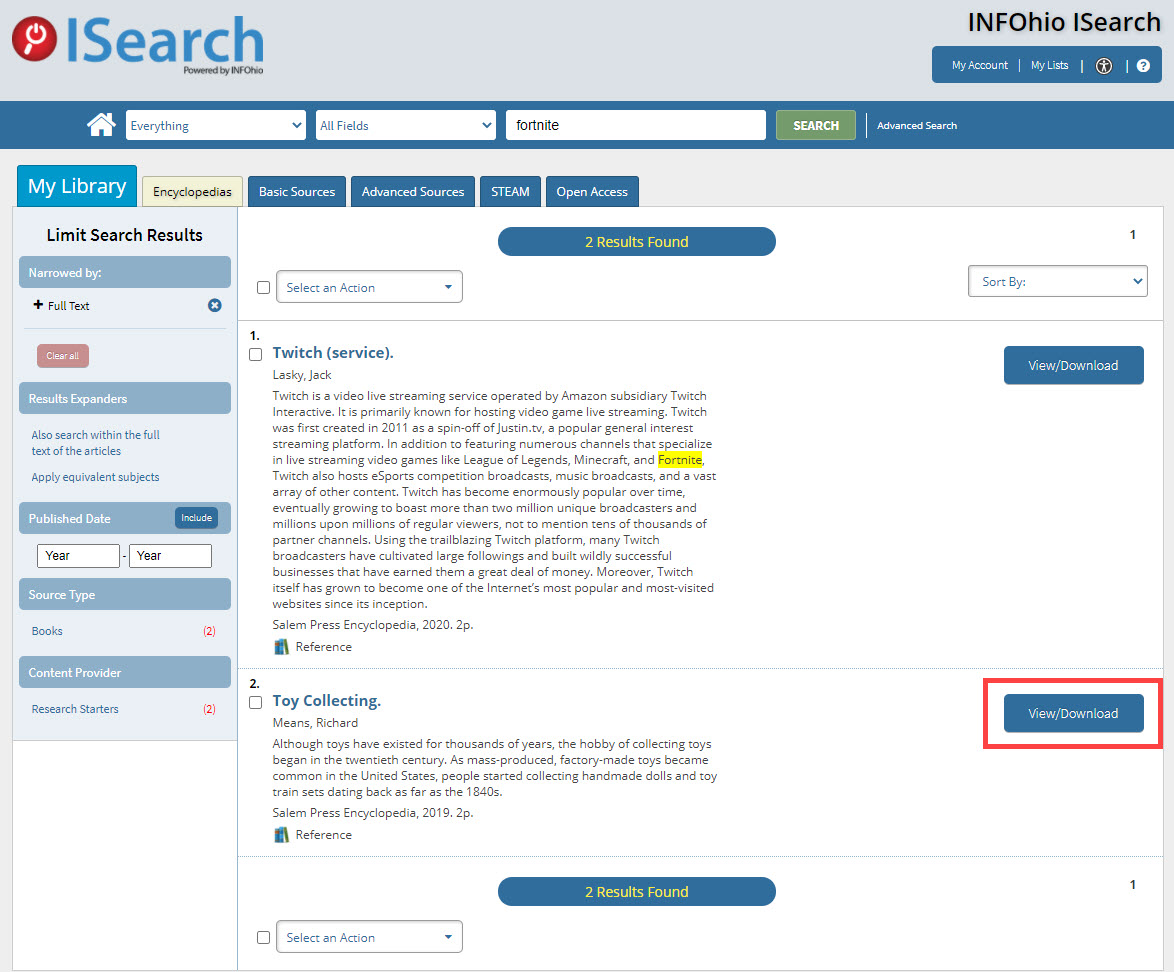
If the text does not have the content they are looking for, they can click the Basic Sources tab.
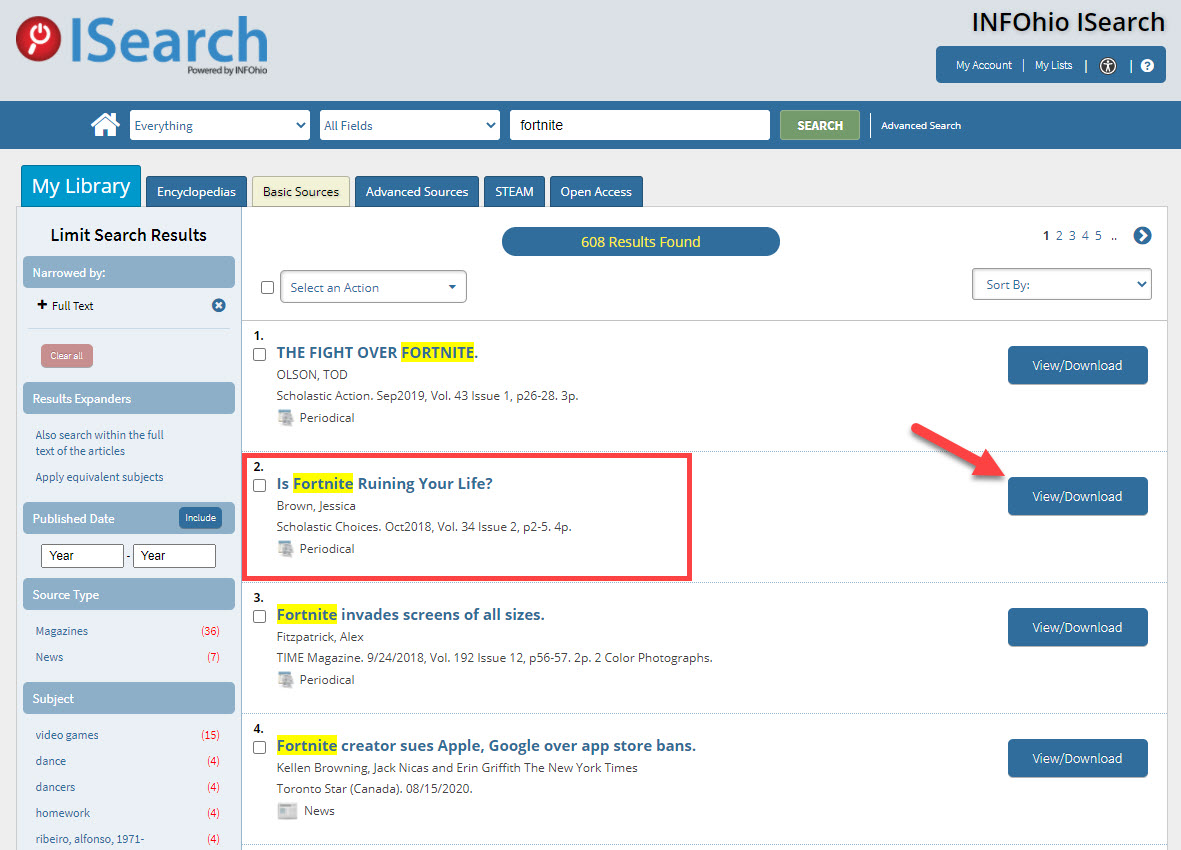
Notice that there is a Lexile Reading Level available for this article from Scholastic Choices. Whether this is lower than, higher than, or right at their instructional level, ISearch provides supports that can help them read this text about their chosen topic. They may have two options for how they can view the text. One is HTML.
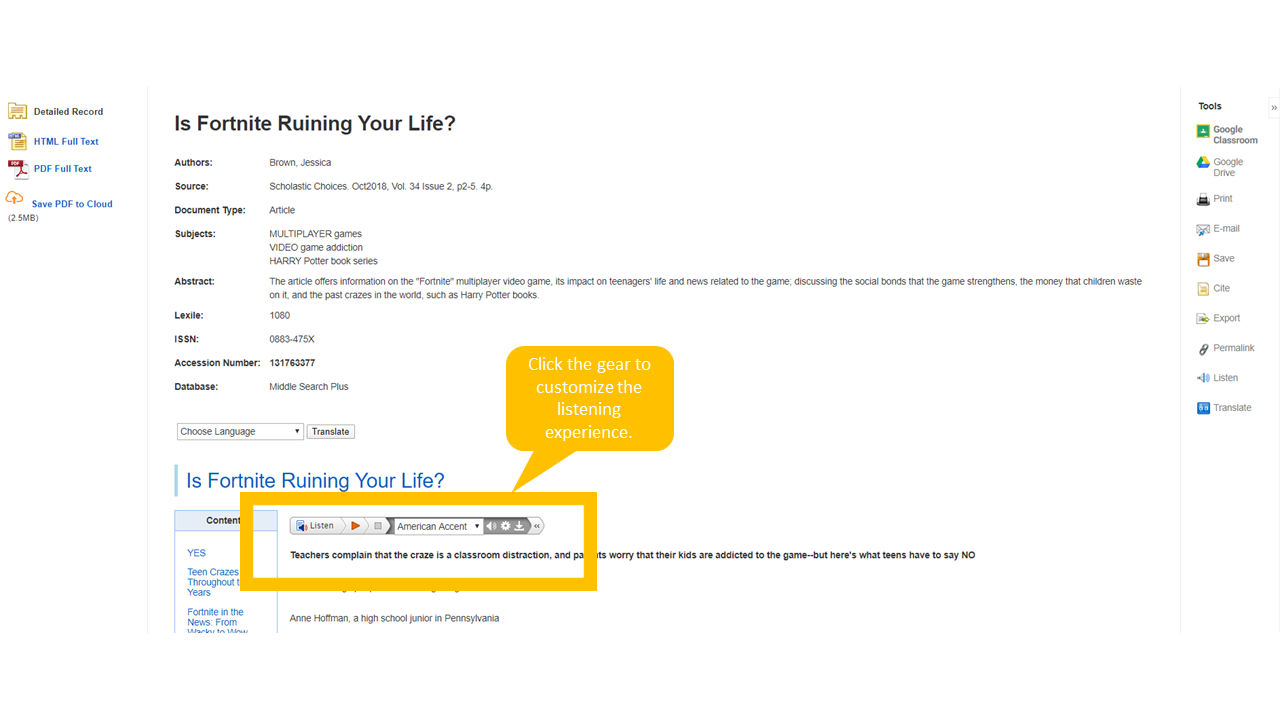
HTML provides a read-aloud feature for students who may need assistance reading at the Lexile Reading Level of the article. It also has enhanced text visibility that will aid a student with vision impairments.
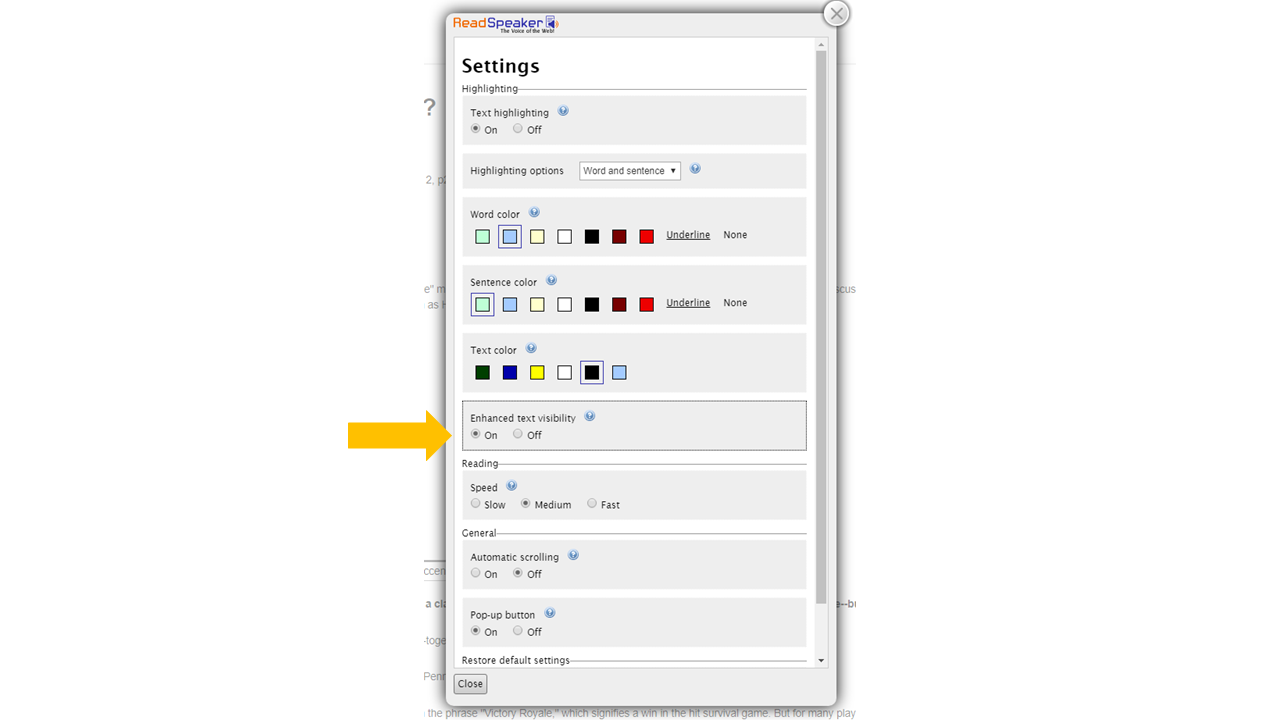
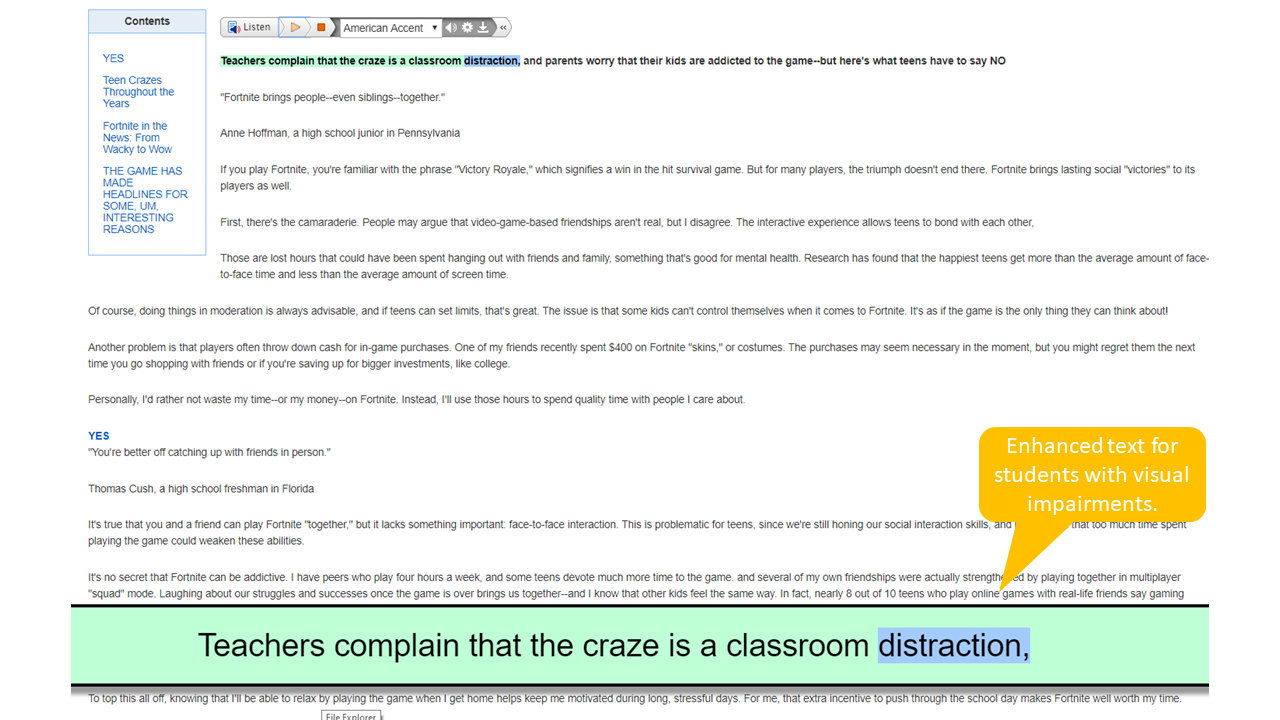
Another option of how they can view the text is PDF. This provides the student with the text as it appeared in its authentic context. Students can save both HTML and PDF to their list, email it, or send it to Google drive to access it later. They can also print it to take with them as they leave the library to return to their classroom.
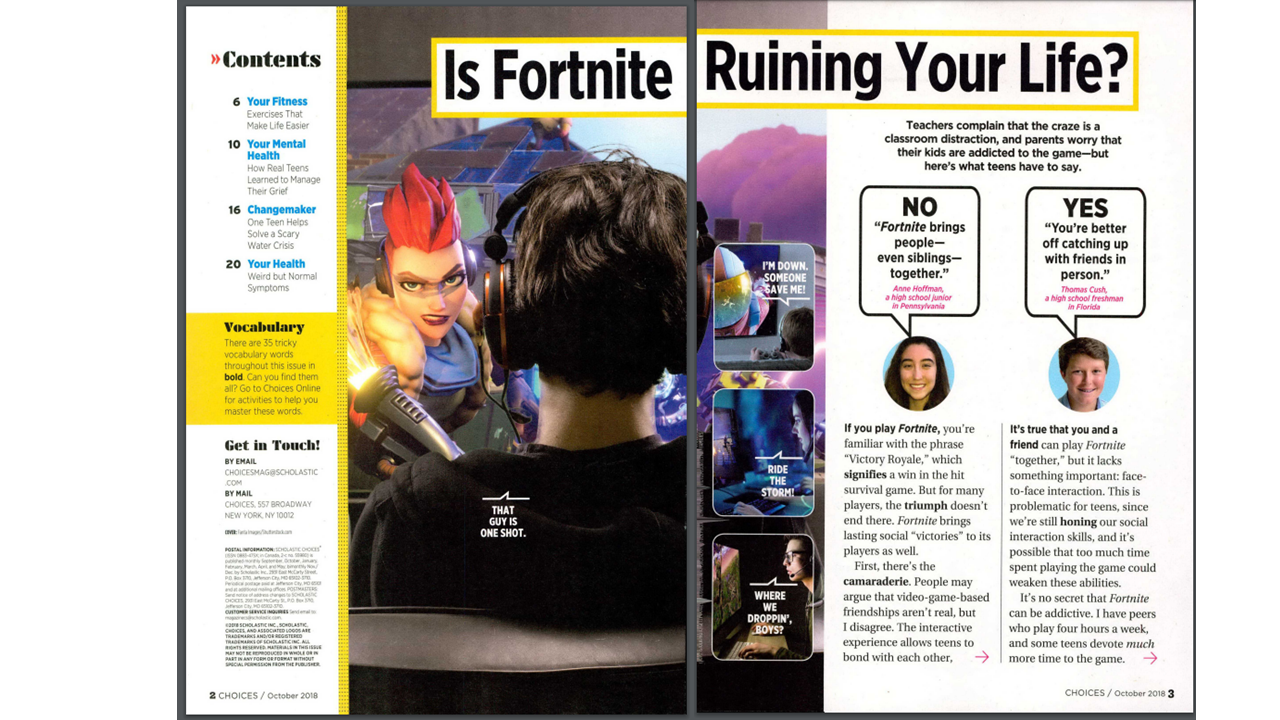
Tools for Reading Digital Text
Learn more about the many tools available within ISearch in this lesson, Tools for Reading Digital Text.
Encourage your students to read text directly from their device. Reading on a screen is different than reading print. According to recent research, most American readers prefer print books to ebooks. Increasingly, students are required to engage with electronic text. These are just a few recent trends that require students to develop the skills needed to read digital texts for comprehension:
INFOhio's Best Practices for Digital Reading were collected by the INFOhio Early Literacy Task Force from journals, education publications, and research studies. Although the best practices were compiled with early readers in mind, most apply to working with older students as well, including:
Fetch is avaiable to INFOhio automated schools. If you are an INFOhio school, please log in with your school username/password using the button at the top-left corner of this page.
For more information about Fetch, please visit the Fetch information page or contact INFOhio support at https://support.infohio.org.